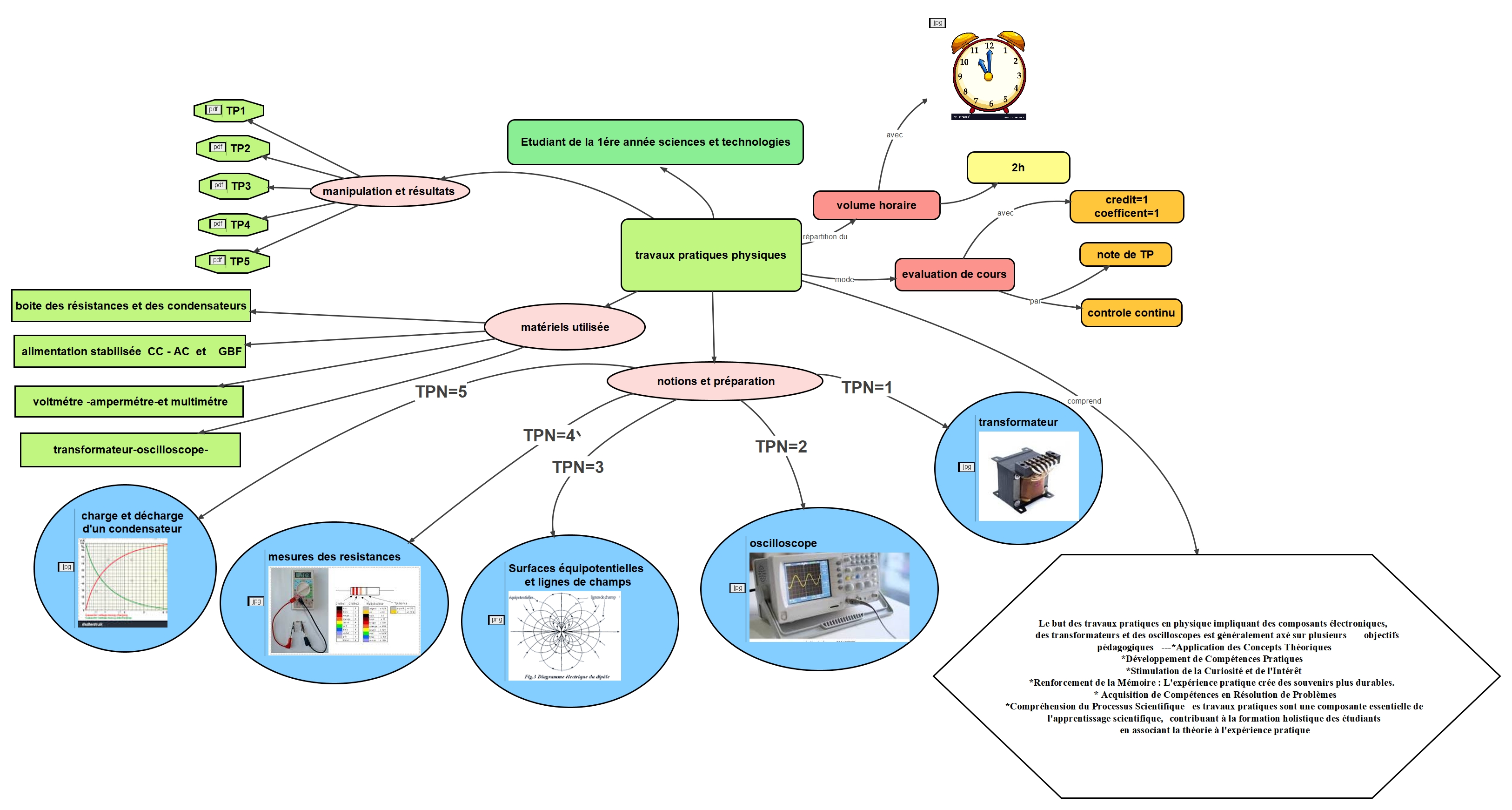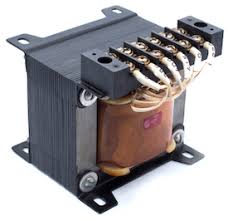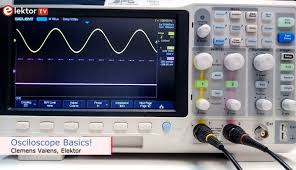physical practical-ST-TIC(2024)- AOUFI .Saliha
Aperçu des sections
-

- The Practical Work Of Physics 2
- Faculty: Science And Technology
- Department: BASE COMMON ST
- Target audience : 1st Year license sciences and technology
- ·Credit=2
- Coefficient=1
- Hourly volume : 24 h in each semesters Hourly: Wednesday 08:00-17:00, Thursday 08:00-12:00 , Lab 02
- Contact: By email: saliha.aoufi@univ-msila.dz
-

To introduce students to the principles of renewable energy sources, such as solar, wind, hydroelectric, and geothermal power, and to understand their potential as sustainable alternatives to conventional power generation methods.
To discuss strategies for efficient power management and conservation, including load balancing, energy-saving techniques, and the use of smart grids and energy-efficient technologies.
To emphasize safety precautions and best practices when working with electrical power, including proper handling of equipment, electrical hazards, and the importance of following safety regulations and standards.
To develop problem-solving skills through practical exercises and experiments involving power calculations, circuit analysis, and troubleshooting of power-related issues.
To provide opportunities for students to apply theoretical knowledge of power physics to real-world scenarios, such as designing electrical systems, optimizing power distribution networks, or implementing energy-saving initiatives.
Develop a comprehensive understanding of electrical circuits, electromagnetic fields, and measurement techniques.
Enhance practical skills in using electrical instruments such as transformers and oscilloscopes.
Foster critical thinking and problem-solving abilities through hands-on experimentation and analysis
Promote teamwork and collaboration in conducting experiments and interpreting results.
- Prepare students for further studies or careers in electrical engineering, physics, or related fields by providing a solid foundation in electrical principles and instrumentation techniques
- Fundamental concepts in physics: This includes physical laws such as laws of motion and dynamics, electromagnetism, heat, energy, light, and sound, as well as understanding the application of these laws to various natural phenomena.
- Experimental skills: Students learn to plan, execute, and analyze different physical experiments, as well as manipulate various laboratory tools and equipment.
- Critical thinking: Students learn to think critically and analyze experimental data and results, as well as evaluate the accuracy of measurements and draw conclusions.
- Mathematical skills: This includes using mathematics to solve physical problems, including algebra, analytic geometry, differential and integral calculus.
- Collaboration and teamwork: Students learn to work in teams to solve complex physical problems, which contributes to the development of communication and collaboration skills.
- Creativity and innovation: The study of applied physics encourages students to demonstrate creativity and innovation in finding new solutions to physical problems.

-
Feedback
-
Paquetage SCORM
-

Transformer:
- Explain the principle of operation of a transformer. How does it change voltage and current levels?
- What is the difference between a step-up and a step-down transformer? Provide an example of each.
- How does transformer efficiency relate to its design and operation? What factors affect efficiency?
- Describe the construction and working of an ideal transformer. How does it differ from real transformers?
- Calculate the output voltage of a transformer given its turns ratio and input voltage.
- Explain the significance of the transformer's rating, including VA (volt-ampere) and impedance.
Oscilloscope:
- Describe the main components of an oscilloscope and their functions.
- What is the purpose of triggering in an oscilloscope? How does it help stabilize the waveform?
- Explain the difference between analog and digital oscilloscopes. What are their advantages and disadvantages?
- How do you measure voltage, frequency, and waveform characteristics using an oscilloscope?
- Discuss the importance of probe compensation and how it's performed on an oscilloscope.
- Describe how to use an oscilloscope to measure the phase difference between two signals.
- What are some common applications of oscilloscopes in electronics and electrical engineering?
Surface Equipotentielle:
- Define equipotential surfaces in the context of electric fields. How are they related to electric potential?
- Sketch the equipotential surfaces around a point charge and explain their characteristics.
- What is the relationship between equipotential surfaces and electric field lines?
- Describe the behavior of equipotential surfaces around a uniform electric field.
- How can you experimentally map equipotential surfaces using electrical probes and voltmeters?
- Discuss the significance of equipotential surfaces in electrical safety and grounding systems.
- Explain how equipotential surfaces are related to the capacitance of a parallel plate capacitor.
Resistance Measurement:
- Explain the principle of operation of a resistance measurement using a multimeter.
- How do you measure the resistance of a resistor using color codes? Provide an example.
- Discuss the importance of zeroing and range selection when measuring resistance.
- Explain how to measure the resistance of a resistor in a circuit using the ohmmeter function of a multimeter.
- How can you measure the resistance of a non-linear resistor, such as a thermistor or LDR?
- Describe the Wheatstone bridge circuit and how it's used for precise resistance measurements.
- Discuss the factors that can affect the accuracy of resistance measurements and how to minimize errors.
Charge and Discharge of Capacitors:
- Describe the process of charging a capacitor in an RC circuit. How does the voltage across the capacitor change over time?
- Explain the time constant of an RC circuit and its significance in the charging process.
- How does the voltage across a capacitor change during the discharge process? What factors affect the discharge time?
- Discuss the energy storage and release mechanisms in a capacitor during charge and discharge.
- Calculate the voltage and current in an RC circuit at different time intervals during charging and discharging.
- Describe practical applications of capacitors in electronics and electrical systems.
- How does the capacitance of a capacitor affect its charge and discharge characteristics?
-
Feedback
-

The purpose of this experiment is to demonstrate the transformation by raising or lowering
voltages.
-
Fichier
-
Paquetage SCORM
-
Chat
-
Feedback
-
Forum
-
-

The goal of this work is to manipulate the oscilloscope and the GBF (Low Frequency Generator).
Through:
- Know how to use the multiple controls visible on the front of each device.
- Know how to measure amplitude (voltage), frequency and phase shift.-
Fichier
-
Chat
-
Feedback
-
Forum
-
-

The objective of the experiment is to be able to determine the field lines and
equipotentials surfaces.-
Paquetage SCORM
-
Chat
-
Feedback
-
Forum
-

The overall aim of this experiment is to calculate the resistance within an electrical circuit. Measure the
voltage at its terminals and the current passing through it using a multimeter. Calculate the resistance
using Ohm's law. Assembly of simple and mixed electrical circuits. Determine the equivalent resistance
of a mixed circuit. Highlight the use of the Wheatstone bridge and know metals from the measurement
of resistivity. Resistance is measured in ohm (W)-
Fichier
-
Chat
-
Feedback
-
Forum
-
-

The objective of this experiment is to study the charging and discharging of a capacitor by measuring the
potential difference (voltage) across the capacitor as a function of time.-
Chat
-
Feedback
-
Forum
-

-
Fichier
-
